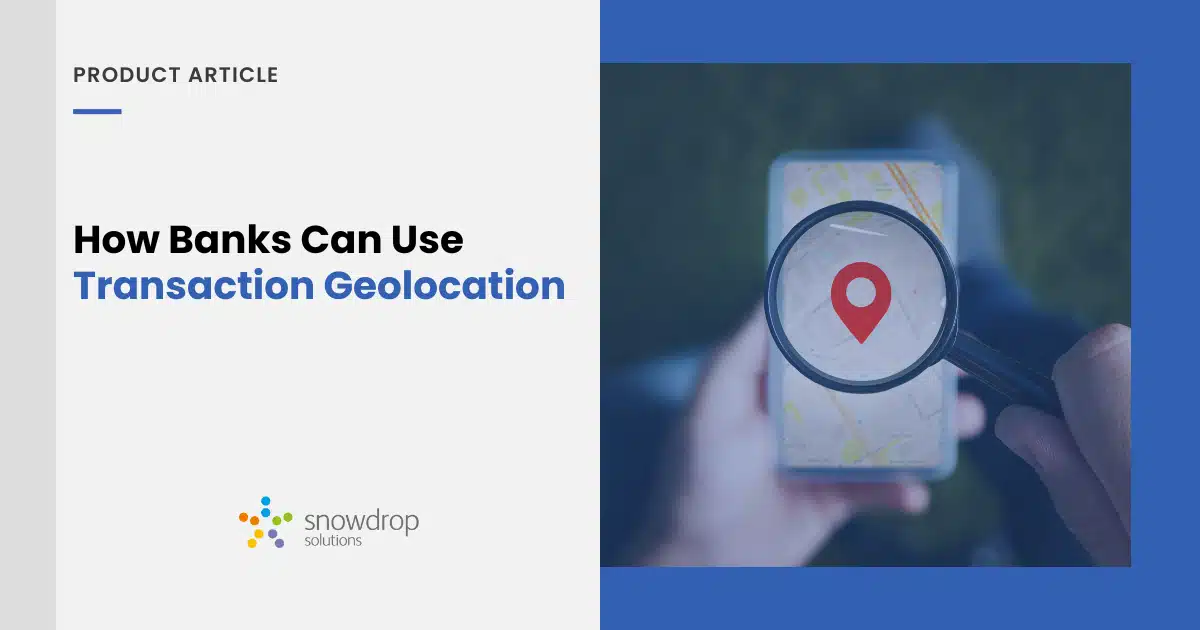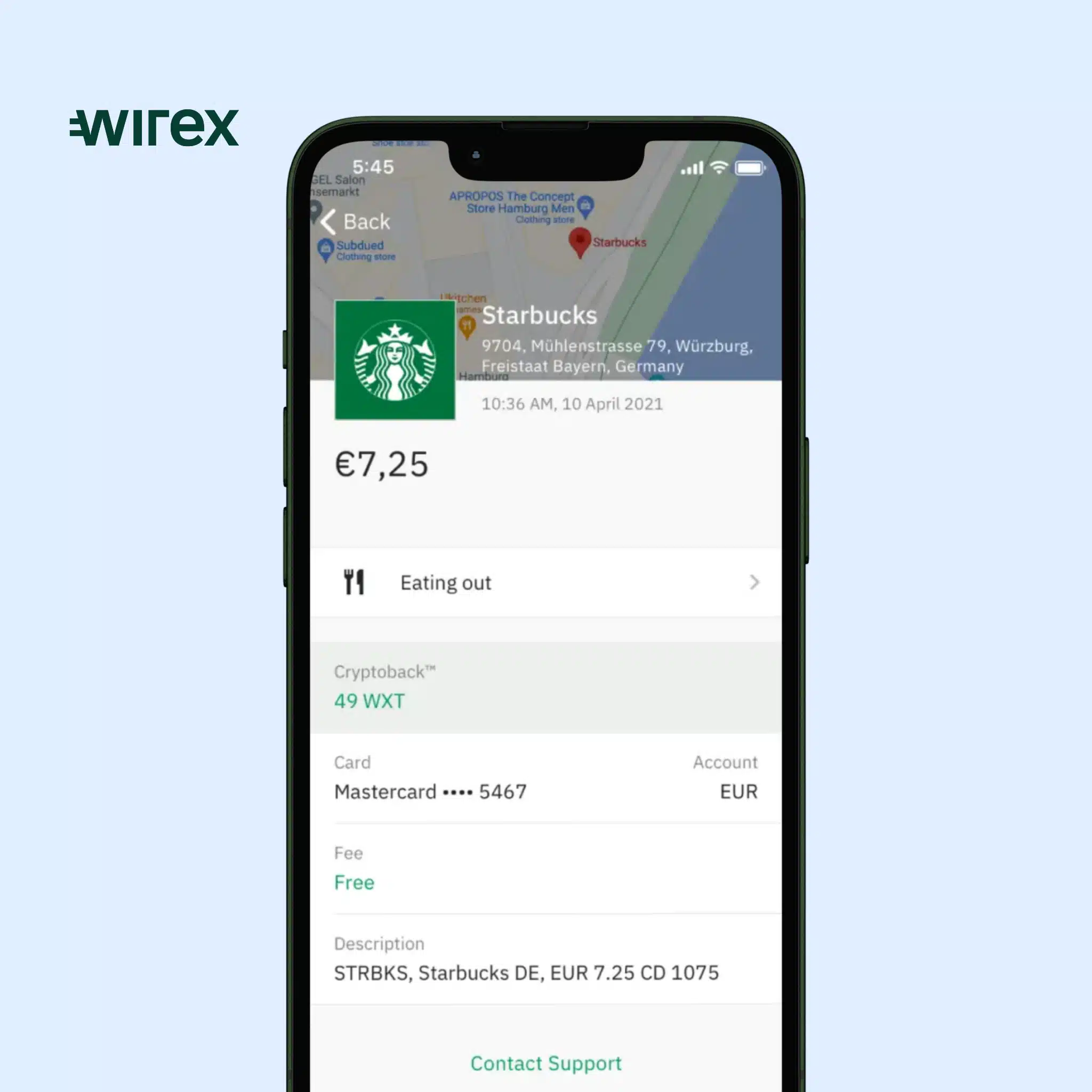March 3, 2025
How Banks Can Use Transaction Geolocation

5 minutes
As digital banking continues to evolve, one key element is shaping the future of customer experiences, fraud prevention, and personalised financial services: transaction location data. By integrating precise geolocation data into banking systems, financial institutions can offer more clarity, security, and engagement to their customers.
What is Transaction Geolocation?
Transaction geolocation refers to the precise geographical coordinates linked to a financial transaction. When a user makes an in-store purchase, the merchant’s exact location appears in their transaction details, allowing them to see where they spent their money instantly.
By leveraging transaction data enrichment, banks can transform raw transaction records into clear, structured, and user-friendly information. Instead of vague or confusing merchant names, enriched transaction data provides details such as the exact location of a purchase on a map, merchant name standardisation, category tagging, and even relevant contact details. This level of clarity enhances transparency, reduces disputes, improves fraud detection, and helps customers better understand their spending habits, ultimately leading to a more seamless digital banking experience.

How Digital Banking Benefits from Geolocation
1. Enhancing User Experience with Clearer Transactions
One of the most common frustrations for digital banking users is unclear or unrecognisable transactions on their bank statements. For example, a purchase at ‘ST*COFFEE G13’ tells users little, while ‘Starbucks, Oxford Street, London’ provides instant clarity. By enriching transaction data with precise locations, banks can eliminate confusion, reduce customer support inquiries, and increase trust in digital banking platforms.
2. Fraud Detection and Security
Geolocation plays a crucial role in identifying fraudulent transactions. If a transaction occurs in a location that deviates significantly from a user’s usual spending patterns—such as a purchase in a different country while the cardholder’s mobile device is detected elsewhere—banks can trigger real-time alerts or authentication measures to prevent fraud. By cross-referencing transaction locations with device locations, banks can enhance security without compromising the user experience.
3. Personalised Financial Services and Targeetted Offers
With precise transaction location data, banks can move beyond traditional financial services and offer personalised, geolocated insights. For example, if a customer frequently visits coffee shops in a specific area, their banking app could provide relevant offers or cashback incentives from local merchants. This level of personalisation helps banks strengthen customer relationships and drive engagement.
4. Seamless Travel and Spending Insights
For frequent travellers, transaction geolocation can make financial management easier by categorising expenses based on regions or merchants. A digital bank app could automatically recognise transactions made abroad, provide real-time currency conversion, or even offer travel-related insights to users.
5. Proven Cost Reduction for Banks
Banks leveraging transaction geolocation also see significant operational benefits. Wirex, a leading digital payments platform, reduced customer support-related operating costs by up to 50% after integrating enriched transaction data. By providing users with clearer geolocation insights, Wirex minimised dispute inquiries and improved overall customer satisfaction. Simply identifying a transaction and showing the right logo and location clearly resolves a headache for many consumers, reducing frustration and solidifying trust in the banking experience.

Use Cases for Geolocation Data in Banking
Transaction geolocation opens up a wide range of possibilities for banks and fintechs to enhance their services. Here are some key ways banks can utilise geolocation:
ATM Locator
Banks can use location data to help users find nearby ATMs quickly and efficiently, improving accessibility to cash services.
Contextual Banking Experiences
Banks can use transaction history and geospatial data to offer personalised deals, such as discounts or cashback at frequently visited merchants. These targeted incentives boost engagement, improve NPS ratings, and increase in-app activity.
Verified Sign Up and Onboarding
Using geolocation to validate a user’s identity during onboarding can speed up account creation and enhance security, reducing fraud risks.
Merchant Insights and Budgeting
Customers can see where they have spent their money, with transactions mapped to merchant locations. Categorised spending reports based on location help users track expenses more effectively and make informed financial decisions.
The Future of Location Data in Digital Banking
As financial institutions continue to invest in digital transformation, location data will become a critical component of next-generation banking services. From improving customer experience and increasing transparency to boosting security and enabling personalised financial offerings, transaction location data is set to redefine how banks interact with their users.
By leveraging geolocation technology, digital banks can differentiate themselves in a competitive landscape while delivering secure, user-friendly, and data-driven financial solutions.
Reliable Transaction Geolocation Data with Snowdrop Solutions
Snowdrop Solutions is at the forefront of transaction data enrichment, providing banks and fintech companies with access to verified, real-time location data. Through our partnership with Google Maps Platform, we ensure accurate merchant details, clear transaction categorisation, and enhanced fraud detection capabilities. Our technology enables financial institutions to deliver seamless user experiences, reduce operational costs, and create new revenue opportunities through location-based insights.
Marketing & Comms Director
Seasoned Marcomms professional with 8+ years of experience in brand management and digital communications. I thrive on creating impactful content and creative strategies, leveraging location-enhanced data enrichment insights for financial and digital technology companies. In my spare time, I nurture my mind and spirit through creative pursuits and immersive reading.